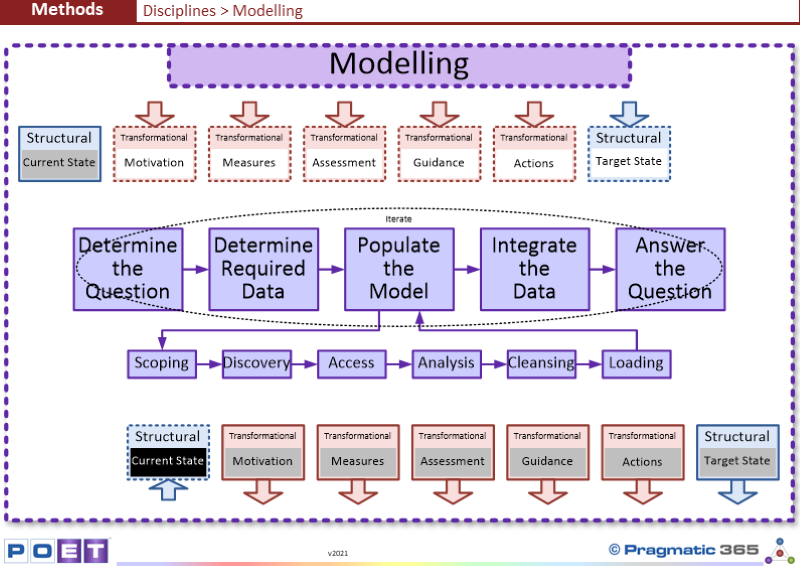
NOTE: The Modelling
Discipline is special. It could be called a Meta-Discipline. It is special
because it is never done on its own, Itís only every used by the other
disciplines.
Here we see the five main sub-disciplines of Modelling:
Determine the Question
®
Here we identify a question that needs to be answered. There is
no reason to model anything unless it will be used to answer a question. Either
the question cannot currently be answered or the quality and confidence in an
existing answer is too low to be useful.
...to read more, please Login or Register